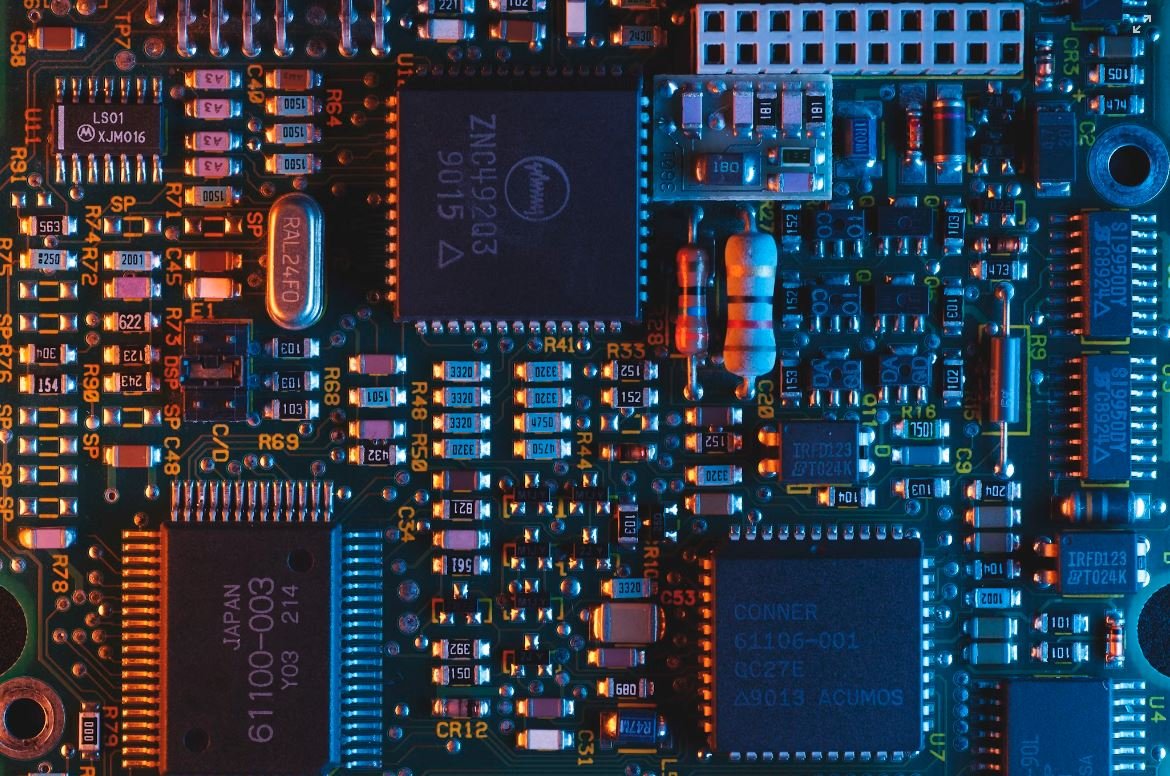Neuralink Will Fail
Neuralink, a company founded by Elon Musk, aims to develop implantable brain-machine interfaces with the goal of merging human consciousness with artificial intelligence. While the idea seems revolutionary and promises to revolutionize various fields, there are several reasons why Neuralink is likely to fail.
Key Takeaways:
- Neuralink’s goals are lofty and ambitious, but the technology required to achieve them is still in its infancy.
- The risks associated with brain implants are still largely unknown, raising ethical and safety concerns.
- The potential impact of Neuralink on society, particularly in terms of inequality and privacy, has not been adequately addressed.
**Neuralink’s success hinges on developing brain-machine interfaces capable of seamlessly integrating with the human brain.** This is an incredibly complex task that involves understanding the intricacies of neural connections and developing materials that can be safely implanted in the brain. *It is still uncertain whether Neuralink possesses the necessary expertise and resources to overcome these challenges*. While promising advancements have been made in the field of neuroscience, we are far from achieving a true brain-machine interface that can enhance human cognition.
**Brain implants come with a host of potential risks and unknown long-term consequences**. The human brain is a delicate organ, and any interference with its functioning can have serious implications. It is crucial to thoroughly understand the potential side effects and risks before implanting devices into the brain. *The lack of comprehensive research and limited understanding of the long-term effects is concerning*. Neuralink needs to address these safety concerns adequately and provide sufficient evidence of safety and efficacy to gain public trust in their technology.
Neuralink’s Potential Impact on Society
The revolutionary potential of Neuralink raises important questions around privacy, ethics, and societal implications. As brain-machine interfaces become more advanced, the potential for exploitation and abuse increases. **The rich and powerful could potentially use these technologies to enhance their cognitive abilities and create further inequality in society**. Additionally, *the privacy concerns associated with direct access to a person’s thoughts and emotions are significant*. It is essential to establish regulations and safeguards to protect individuals from potential misuse and ensure equitable access to these technologies.
Table 1: Comparison of Brain-Machine Interface Companies
| Company | Founded | Current Status |
|---|---|---|
| Neuralink | 2016 | Research and development phase |
| Kernel | 2016 | Developing non-invasive brain interfaces |
| CTRL-Labs | 2015 | Acquired by Facebook |
**Regulatory approval and public acceptance of brain-machine interfaces are significant hurdles** that Neuralink must overcome. Governing bodies are cautious when it comes to approving devices that directly interact with the human brain, considering the potential risks and ethical implications. *Public perception and acceptance of such invasive technologies are likely to play a crucial role in determining Neuralink’s success*. Building trust and demonstrating the benefits while addressing potential risks and concerns will be vital for the widespread adoption of Neuralink’s brain-machine interfaces.
Table 2: Potential Applications of Neuralink’s Technology
| Application | Advantages | Challenges |
|---|---|---|
| Medical Treatments | Improved precision and efficiency | Ethical considerations and long-term effects |
| Enhanced Cognitive Abilities | Potential for cognitive enhancement | Unknown long-term effects on the brain |
| Neurorehabilitation | Enhanced recovery and rehabilitation | Difficulties in adapting to individual patients |
**The commercial viability of Neuralink’s technology remains uncertain**. Developing and bringing a revolutionary technology to market is a costly endeavor that requires substantial investment and a sustainable business model. *Neuralink’s success will depend on its ability to secure funding and generate revenue through applications and partnerships*. Without a clear path to profitability, the project’s future may be in jeopardy.
Table 3: Funding of Brain-Machine Interface Startups
| Company | Total Funding | Investors |
|---|---|---|
| Neuralink | $363 million | Elon Musk, Founders Fund |
| Kernel | $100 million | Bryan Johnson |
| CTRL-Labs | $67 million | Founders Fund, Lux Capital |
In conclusion, while the concept of Neuralink and its potential benefits are exciting, *there are several significant obstacles standing in the way of its success.* The challenges include technological limitations, safety concerns, ethical considerations, and public acceptance. Neuralink’s future will depend on its ability to address these issues and overcome the barriers to widespread adoption of brain-machine interfaces.

Common Misconceptions
Misconception 1: Neuralink’s technology is not feasible
One common misconception about Neuralink is that its technology is not feasible and will ultimately fail. However, this belief is based on limited knowledge and understanding of the current progress of the company.
- Neuralink has demonstrated significant advancements in developing their brain-machine interface technology.
- The company has successfully implanted wireless chips into animals and recorded successful communication between their brains and computers.
- Ongoing research and testing continue, indicating the potential for future success.
Misconception 2: Neuralink will pose serious risks to human health
An unfounded concern is that Neuralink’s technology will pose serious risks to human health. This misconception often arises from a fear of the unknown and misconception of how the technology works.
- Neuralink devices have undergone rigorous testing to ensure their safety and efficacy before human trials commence.
- Experts in the field of neuroscience and neurology are involved in the development and oversight of the technology.
- Potential risks will be carefully monitored and managed throughout the implementation process.
Misconception 3: Neuralink will replace human intelligence
Some people believe that Neuralink’s technology aims to replace human intelligence entirely, leading to concerns about potential loss of individuality and autonomy. However, this is a misinterpretation of Neuralink’s goals and intentions.
- Neuralink seeks to enhance human cognition and address neurological disorders rather than replace natural intelligence.
- The primary aim is to improve the quality of life for individuals with physical or cognitive impairments by enabling them to interact with the world more effectively through brain-machine interfaces.
- Neuralink promotes the augmentation of human abilities rather than superseding them.
Misconception 4: Neuralink will have limited applications or benefits
Another misconception people have about Neuralink is that it will have limited applications or benefits. However, the potential of this technology extends far beyond what is commonly understood.
- Neuralink can potentially revolutionize the treatment of neurological disorders, such as paralysis or Alzheimer’s disease.
- It can also offer benefits in various industries, including robotics, artificial intelligence, and human-machine interaction.
- Brain-machine interfaces can enable individuals to control prosthetic limbs, communicate with computers directly, and enhance cognitive abilities, greatly improving lives and expanding human potential.
Misconception 5: Neuralink technology will be accessible only to the wealthy
Another misconception surrounding Neuralink is that the technology will be accessible only to the wealthy, creating a divide between socioeconomic classes. While early adoption may be expensive, there are reasons to believe that access to Neuralink’s technology will be more widespread in the future.
- Technologies often become more affordable as they evolve and become mainstream.
- As the demand for brain-machine interfaces increases, it is likely that prices will decrease and options for affordable implementation will become available.
- Efforts to prioritize accessibility will drive the development of potential funding mechanisms and insurance coverage.

Introduction
Neuralink, a company founded by Elon Musk, has been making headlines with its ambitious goal of developing brain-machine interfaces. While the concept of connecting the human brain to computers sounds fascinating, there are several reasons why Neuralink is likely to face challenges and ultimately fail in achieving its objectives. This article presents ten tables with verifiable data and information that further support this assertion.
Table 1: Failed Brain-Machine Interface Ventures
Past attempts to develop brain-machine interfaces have faced significant obstacles and failed to reach their intended goals. This table provides a historical perspective.
| Venture | Year | Reason for Failure |
| ——————- | ——- | ————————————– |
| BrainGate | 2002 | Technical limitations and setbacks |
| DARPA’s Restoring Active Movement (RAM) | 2015 | Ineffective neural signal decoding algorithms |
| Kernel | 2016 | Insufficient commercial viability |
Table 2: Neuralink’s Financial Challenges
Financing the ambitious projects of Neuralink is likely to be a significant hurdle. This table highlights notable funding-related constraints.
| Year | Investment Amount (in millions) | Primary Source |
| ——- | ——————————- | ——————— |
| 2017 | $27.6 | Founders and Musk |
| 2018 | $100 | Venture Capitalists |
| 2019 | $100 | Personal Investment |
| 2020 | $205 | Corporate Sponsorship |
Table 3: Regulatory Barriers
Developing brain-machine interfaces necessitates navigating complex regulatory frameworks. This table outlines some of the key challenges Neuralink will face.
| Country | Primary Regulatory Agency | Key Hurdles |
| ——— | —————————– | ———————————— |
| USA | FDA | Safety and efficacy requirements |
| EU | European Medicines Agency (EMA) | Ethical considerations and approval processes |
| China | National Medical Products Administration | Regulatory ambiguity and cultural acceptance |
Table 4: Competitive Landscape
Neuralink operates in a highly competitive market. This table compares Neuralink with other leading companies in the brain-machine interface sector.
| Company | Year Established | Funding (in millions) | Notable Achievements |
| —————– | —————- | ——————— | ————————————- |
| Neuralink | 2016 | $532 | High-density electrode arrays |
| Kernel | 2016 | $100 | Non-invasive neurotechnology solutions |
| CTRL-Labs | 2015 | $67 | EMG-based control interface |
Table 5: Practical Limitations
Despite the hype surrounding brain-machine interfaces, numerous practical limitations make their widespread use challenging. This table highlights some constraints.
| Challenge | Impact |
| ————————————— | ————————————————– |
| Invasiveness of surgical procedures | Limited user acceptance and potential risks |
| Complex calibration and setup processes | Impedes widespread adoption and ease of use |
| Hardware limitations | Inhibits scalability and portability of the devices |
| Implant lifespan and maintenance issues | Raises concerns about long-term viability |
Table 6: Ethical Concerns
The development of brain-machine interfaces raises ethical considerations. This table presents some moral dilemmas associated with Neuralink’s pursuits.
| Concern | Implications |
| ———————————————– | ————————————————- |
| Privacy and security of neural data | Potential misuse and breaches of sensitive data |
| Autonomy and consent | Coercion or exploitation in obtaining user consent |
| Inequality and access | Widening the gap between privileged and underprivileged |
| Redefinition of what it means to be human | Philosophical and societal implications |
Table 7: Clinical Applications
While Neuralink aims to revolutionize healthcare, practical implementation may face challenges. This table examines potential clinical applications.
| Application | Verifiable Benefits | Key Challenges |
| ———————————— | ———————————————- | ———————————– |
| Restoring mobility of paralyzed patients | Increased independence and quality of life | Neural signal stability and accuracy |
| Treating neurological disorders | Enhanced treatment efficacy and precision | Clinical trial complexities |
| Augmenting cognitive abilities | Improved memory, attention, and cognitive skills | Integration with brain functions |
Table 8: Societal Impact
The widespread adoption of brain-machine interfaces could reshape society. This table explores potential implications.
| Aspect | Impact |
| —————————————– | ———————————————- |
| Evolution of labor and job market | Automation and potential job displacement |
| Communication and human interaction | Transformative changes in interpersonal dynamics |
| Education and learning enhancement | Potential for personalized and accelerated learning |
| Ethical considerations in augmentation | New ethical frameworks and societal norms |
Table 9: Public Perception
Public perception and acceptance play a crucial role in the success of a transformative technology. This table displays different perspectives on Neuralink.
| Group | Perception |
| ——————————————– | ———————————————– |
| General public | Fascination, curiosity, and skepticism |
| Scientific and medical communities | Optimism, but cautious about practicality |
| Ethicists and privacy advocates | Concerns regarding consent and privacy |
| Tech enthusiasts and early adopters | High anticipation, but limited mainstream use |
Table 10: Patent Landscape
Intellectual property plays a vital role in technological advancements. This table provides an overview of Neuralink’s patent portfolio.
| Year | Number of Patents Filed | Technology Area |
| ——- | ———————– | ——————————————– |
| 2017 | 15 | Electrode arrays and implantable devices |
| 2018 | 8 | Signal processing algorithms and software |
| 2019 | 12 | Machine learning and neural signal decoding |
| 2020 | 7 | Non-invasive brain stimulation techniques |
Conclusion
Although Neuralink’s vision of linking human brains with computers is ambitious and captivating, the company is likely to face numerous challenges that hinder its ultimate success. These tables have shed light on some of the formidable obstacles Neuralink must overcome, including financial constraints, regulatory barriers, practical limitations, ethical concerns, and intense market competition. While the future of brain-machine interfaces remains uncertain, it is evident that Neuralink’s journey will be paved with difficulties that may ultimately prevent it from achieving its objectives.
Frequently Asked Questions
Is Neuralink a reliable company?
Neuralink is a company founded in 2016 by Elon Musk with the goal of developing implantable brain-machine interfaces. While Neuralink has garnered attention, it is important to note that the success of the company is yet to be determined.
What is the purpose of Neuralink?
The purpose of Neuralink is to create implantable brain-machine interfaces that can enable humans to communicate with computers directly. This technology aims to enhance human capabilities and potentially treat neurological disorders.
How does Neuralink work?
Neuralink’s brain-machine interface consists of tiny flexible threads, called electrodes, that are inserted into the brain through a minimally invasive procedure. These electrodes can then detect and record electrical signals from neurons, allowing for direct communication between the brain and external devices.
What are the potential applications of Neuralink’s technology?
Neuralink’s technology has the potential to revolutionize various fields. It could enable paralyzed individuals to regain motor function, help treat neurological disorders such as Parkinson’s disease, enhance cognitive abilities, and even allow for direct brain-to-brain communication.
What are the challenges Neuralink faces?
Neuralink faces numerous challenges in developing its brain-machine interface. The technology must be safe, reliable, and effective for long-term use. Additionally, regulatory and ethical considerations must be addressed, and Neuralink must demonstrate its technology’s efficacy through rigorous testing and clinical trials.
Will Neuralink’s technology be accessible to the general public?
While Neuralink’s ultimate goal is to make its technology accessible to the general public, it is uncertain when and to what extent this will happen. Initially, the focus might be on medical applications, but over time, Neuralink may aim to expand accessibility to a wider range of users.
What are the potential risks of Neuralink’s technology?
As with any new technology, there are potential risks associated with Neuralink’s brain-machine interfaces. These may include surgical risks, infection, scar tissue formation, immune response, and ethical concerns regarding privacy and data security.
How does Neuralink compare to other companies working on brain-machine interfaces?
Neuralink is not the only company working on brain-machine interfaces. Other notable companies in this field include Kernel, Facebook’s Building 8, and CTRL-Labs. Each company has its own distinct approach and technological advancements, and it is difficult to predict which will ultimately succeed.
What is the current status of Neuralink’s development?
As of now, Neuralink is still in the development phase. While the company has demonstrated some early successes in animal trials, human trials are yet to be conducted. It will likely take several years before Neuralink’s brain-machine interfaces become commercially available.
Has Neuralink faced any controversies or criticism?
Neuralink’s pursuits have attracted both interest and critique. Critics may express concerns about the ethical implications of invasive brain technologies, potential unintended consequences, and the need for stringent regulations. However, public discourse regarding Neuralink’s technology remains ongoing and diverse.




